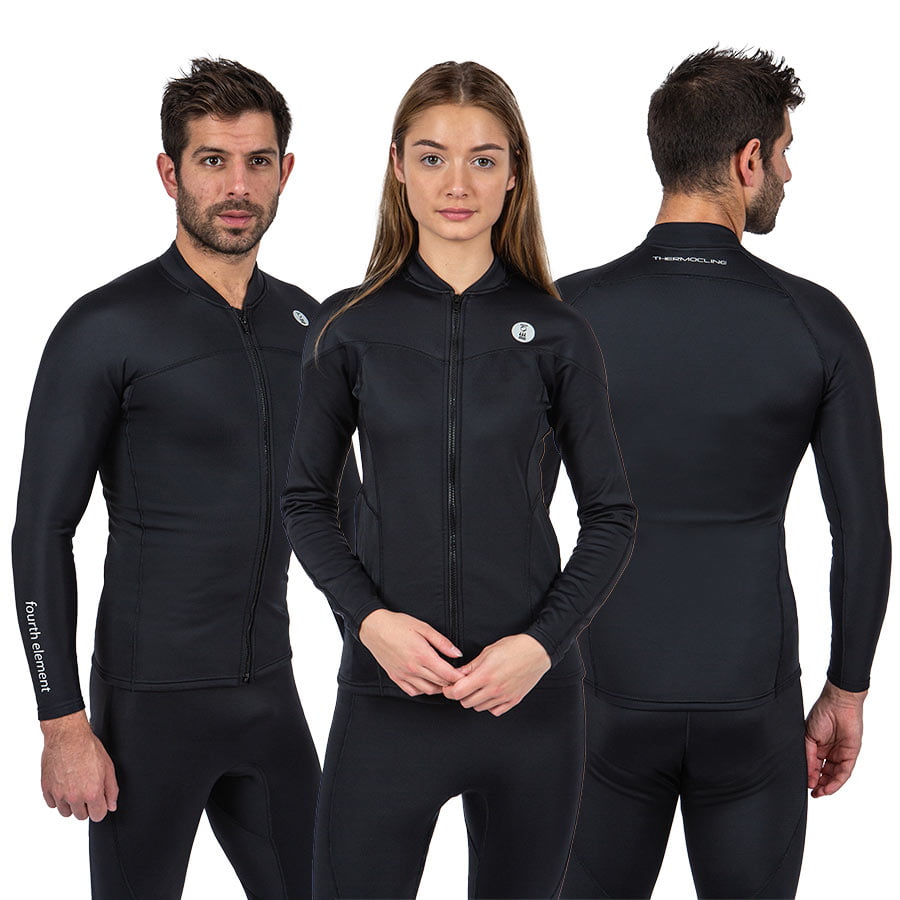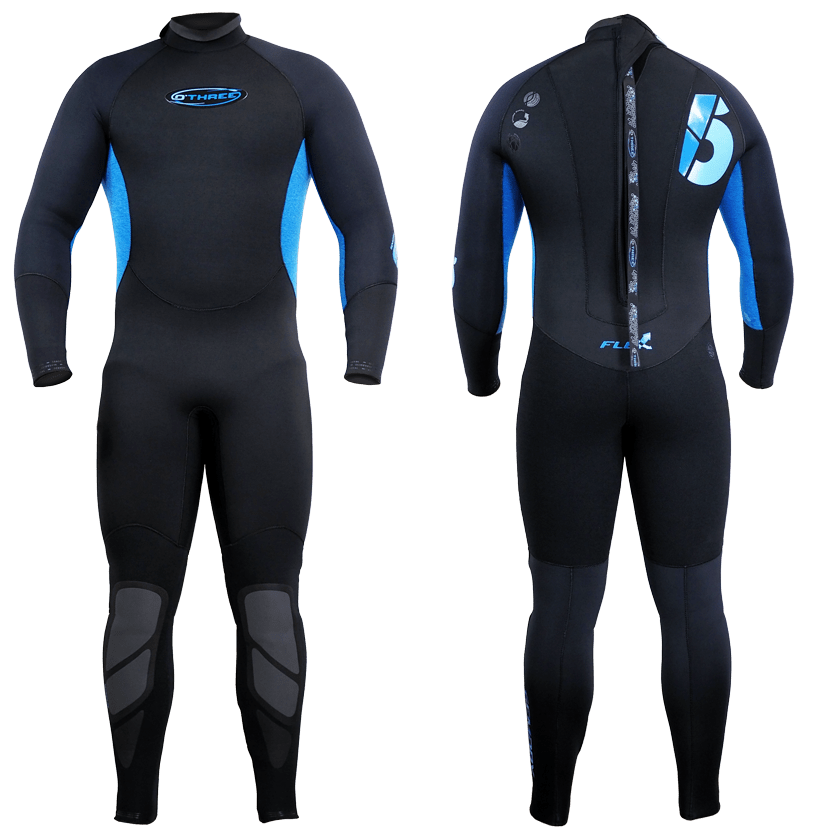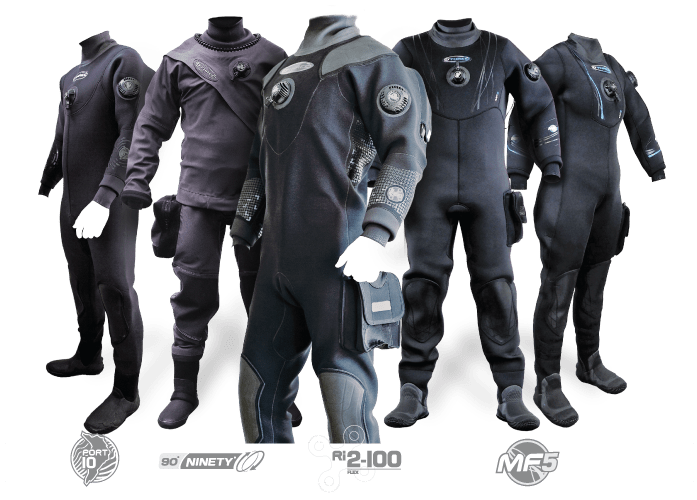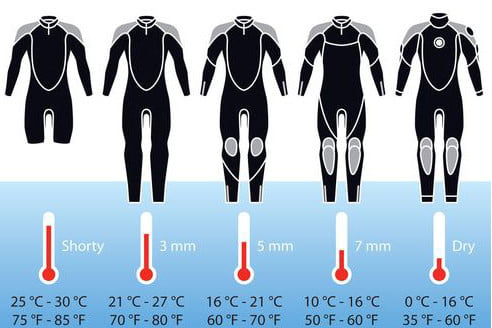The Pro Guide To Scuba Diving Suits
Diving into the underwater world is an exciting and exhilarating experience. Whether you are exploring a coral reef, investigating shipwrecks, or just swimming with the fish, diving suits are an essential piece of equipment.
Not only do they provide thermal protection and comfort, but diving suits also keeps you safe from the elements and potential hazards. In this article, I will dive deep into the world of diving suits and uncover what you need to know before you make your next dive.
Types of Diving Suits
Bodysuits: Ultralight Protection
Bodysuits are similar to shorty wetsuits but are made from thinner lycra or thermal fleece-type material. They are designed for warm water temperatures and are best for surface activities like snorkeling or paddleboarding. They offer less insulation than a full or shorty wetsuit, but they provide a layer of protection against the sun and stings from jellyfish, hydroids, or corals. Brands such as Fourth Element and Sharkskin offer thermal bodysuits that are claimed to be approximately equivalent to 3mm neoprene for insulation.

Wetsuits: Ideal for Warm Water Activities
If you’re planning to participate in diving activities in warm temperate or tropical waters a wetsuit is the way to go. Wetsuits are made of neoprene and are designed to fit snugly against your skin, trapping a thin layer of water between your body and the suit.
This water is warmed by your body heat, providing insulation and keeping you comfortable. Wetsuits are available in a range of thicknesses, so you can choose the level of insulation that’s right for you.

Semi-Dry Suits: A Balance of Comfort and Warmth
Semi-Dry Suits are a popular choice for divers in temperate water conditions, offering a balance of comfort and increased warmth. These suits are made of thicker neoprene that provides a high level of insulation. They also feature gaskets or seals around the neck, wrists, and ankles, to help prevent water from entering the suit.
They are also a great choice for divers who remain active during cooler weather seasons, as they provide enough warmth to keep you comfortable in temperatures down to around 50°F.

Dry Suits: Ultimate Protection from the Elements
For water activities in extremely cold temperatures, or for those who want the ultimate protection from the elements, a Dry Suit is the way to go.
These suits are made of waterproof material, such as nylon trilaminate or neoprene, that completely seals out water. This means you’ll stay completely dry and comfortable, even in the harshest conditions. Because you stay dry beneath the suit, you can add insulating undergarments to suit the water temperature.
Additionally, drysuits contribute to your buoyancy, and can even be considered a redundant buoyancy device to your BCD.

Diving Suits: Thickness for Scuba Diving
Based on the factors mentioned above, here are the recommended wetsuit thicknesses for different water temperatures:
- 60°F (15°C) and below: Semi-dry or drysuit
- 61°F to 68°F (16°C to 20°C): 7mm wetsuit or semi-dry
- 69°F to 79°F (21°C to 26°C): 5mm neoprene wetsuit
- 70°F (26°C) and above: 3mm neoprene wet suit or bodysuit

Design Features to Look for in Diving Suits
In addition to the material, the design of a diving suit is also important to consider. There are several design features that you should look for when choosing a diving suit, including:
- Zippers: Zippers are essential for ease of use and ensure that you can quickly and easily get in and out of your dive suit. Look for diving suits with high-quality zippers that are resistant to corrosion and rust.
- Seals: Seals around the neck, wrists, and ankles prevent water from entering the dive suit and ensure that you stay warm and dry. Look for seals that are secure and easy to adjust.
- Pockets: Pockets are a convenient place to store small items, such as dive lights, cameras, and other accessories. Look for dive suits with thigh pockets that are secure and easily accessible.
Diving suits: Drysuits
There are several types of scuba diving drysuits, each designed for specific diving environments and conditions.
Neoprene Drysuits
Neoprene drysuits are made of neoprene, a synthetic rubber material that is both flexible and insulating. These drysuits are ideal for diving in colder water, as they provide excellent insulation and are easy to move in.
However, neoprene drysuits are heavier and bulkier than membrane drysuits, making them less comfortable for long dives. Some manufacturers sell crushed neoprene drysuits which are a less bulky and more flexible option.
Membrane or Trilaminate Drysuits
Trilaminate drysuits are made of a combination of materials, including a waterproof outer layer, an insulating middle layer, and a breathable inner layer. This type of drysuit provides less insulation but also has little inherent buoyancy and is more flexible when worn.
The scuba diver can select appropriate thermal undergarments to wear under the membrane or trilaminate drysuit to provide enough insulation for the water conditions.
Drysuit Features and Options
Drysuit Seals
The seals on a drysuit are important to prevent water from entering the suit. There are two types of seals: neck seals and wrist seals. Neck seals can be made from latex, silicone, or a combination of the two, and are designed to be snug around the neck to prevent water from entering the suit. Wrist seals are also important to prevent water from entering the suit, and can be made from latex, silicone, or a combination of the two.
Drysuit Zippers
The zipper on a drysuit is another important feature to consider. There are two types of zippers: front zippers and back zippers. Front zippers are the most common type of zipper and provide easy access to the suit. Back zippers are less common, but they are easier to get into and out of the suit.
Drysuit Boots
Boots are an important part of a drysuit and are designed to keep your feet warm and dry while diving. There are two types of boots: attached boots and detachable boots. Attached boots are sewn directly to the drysuit, while detachable boots can be removed for easier transport and storage.
Telescoping torsos
Some drysuits feature a telescoping torso, which makes finding the right fit much easier. These also increase flexibility and range of motion when using the suit on dives.
Dry Gloves
Some drysuits feature a ring mechanism at the wrists which allows the connection of dry gloves. These offer the maximum thermal protection for the hands in very cold waters.
Thigh Pockets
Thigh pockets are a very useful addition to a drysuit; allowing storage of accessory equipment like reels, DSMBs, slates and spare masks. It can be cost-effective to buy a drysuit that comes with pockets, as adding them at a later date will be more expensive.
Diving suits: Wetsuits
A wetsuit is one of the most important pieces of equipment you’ll need if you dive in warm water locations, as it provides insulation from the cold and protects you from the elements. With so many options available, it can be difficult to know which wetsuit is right for you. This guide will walk you through the key factors to consider when choosing a scuba diving wetsuit, so you can make an informed decision.
How Do Wetsuits Work?
Wetsuits work by trapping a thin layer of water between the skin and the suit. This layer of water is warmed by the body’s heat, creating a warm insulation layer that helps to keep the diver warm. The suit itself is made of a neoprene material, which is a synthetic rubber that is both flexible and durable. The neoprene also helps to prevent water from entering the suit and cool down the layer of trapped water, thus maintaining the diver’s body temperature.
Choosing the Right Diving Wet Suit
When it comes to choosing diving suits, the material is one of the most important factors to consider. There are several options available, including neoprene, rubber, and nylon. Each material has its own unique benefits and drawbacks, so it is essential to choose the one that best suits your needs.
- Neoprene Wetsuits: This is a popular choice for diving suits due to its versatility and comfort. Neoprene is flexible, durable, and provides excellent insulation. It is also resistant to punctures and abrasions, making it a great choice for divers who are exploring rocky or rough underwater terrain.
- Rubber Wet Suits: Rubber dive suits are typically made from high-quality natural or synthetic rubber and offer excellent durability. They are ideal for colder water conditions and provide excellent insulation. However, they are not as flexible as neoprene dive suits and can be more restrictive.
- Lycra or Thermal Body Suits: Lycra and thermal dive suits are popular choices for divers who need a lightweight and compact suit. They are ideal for warm water conditions and provide good protection against sunburn and stings from jellyfish and other aquatic creatures. They have the added benefits of being quick drying, machine washable and neutrally buoyant in the water. However, they do not provide as much insulation as other materials and can be more easily damaged by sharp objects.
Choosing the Right Wetsuit Thickness
One of the crucial factors that determine the comfort and efficiency of a wetsuit is its thickness. Choosing the right wetsuit thickness is essential to ensure a safe and enjoyable diving experience. The thicker the material, the more insulation it provides.
Basic guidelines for water temperature have been given already, but ultimately the decision is personal based upon an individual diver’s tolerance for the cold. A thicker wetsuit also offers better protection against cuts, scrapes, and stings from marine life.
Factors to Consider When Choosing a Wetsuit Thickness
There are several factors to consider when choosing the right wetsuit thickness for scuba diving. These include water temperature, dive duration, and personal comfort.
Water Temperature
The water temperature is a crucial factor to consider when choosing a wetsuit thickness. The general rule of thumb is to choose a wetsuit that is suitable for the water temperature range in which you will be diving. The thicker the wetsuit, the more insulation it provides and the warmer you will be.
Dive Duration
The length of time you plan to spend underwater will also affect the thickness of the wetsuit you choose. For longer dives, a thicker wetsuit may be necessary to provide sufficient insulation.
Personal Comfort
Finally, personal comfort is a crucial factor to consider when choosing a wetsuit thickness. A wetsuit that is too thick can be restrictive and uncomfortable, making it difficult to move freely underwater. On the other hand, a wetsuit that is too thin may not provide enough insulation, making the dive uncomfortable and potentially dangerous.
Body type
Wetsuits come in various sizes and shapes, so it’s important to choose a wetsuit that fits your body type well. A well-fitting wetsuit will provide better insulation and be more comfortable to wear.
Budget
Wetsuits range in price, so it’s important to consider your budget when choosing a wetsuit.
Frequently Asked Questions About Diving Suits
- What is the best material for diving suits?
- The best material for a diving suit will depend on your individual needs and preferences. Neoprene dive suits are versatile and comfortable, while rubber dive suits are ideal for colder water conditions. Nylon dive suits are lightweight and ideal for warm water conditions.
- How should diving suits fit?
- A diving suit should fit snugly but not be too tight. It should be comfortable to wear and allow for a full range of motion. You should also be able to easily get in and out of the dive suit.
- How do I care for my diving suit?
- To ensure the longest lifespan for your diving suit, it is important to properly care for it. After each dive, rinse the suit in fresh water to remove salt and other debris. Store the suit in a cool, dry place and avoid exposing it to direct sunlight or extreme heat.
- Can I wear two wetsuits if I am cold?
- No, it is not recommended to wear a wetsuit under another diving suit. This can create too much insulation and cause you to overheat. Instead, consider wearing a thin thermal layer under your dive suit for added warmth.
Diving suits: Conclusion
Diving suits are an essential piece of equipment for any underwater adventure. Whether you are exploring a coral reef or investigating shipwrecks, a diving suit will keep you safe, warm, and comfortable. When choosing a diving suit, consider the material and design features that are important to you. With the right diving suit, you can dive into the depths of adventure with confidence.
About The Author

Andy Davis is a RAID, PADI TecRec, ANDI, BSAC, and SSI-qualified independent technical diving instructor who specializes in teaching sidemount, trimix, and advanced wreck diving courses.
Currently residing in Subic Bay, Philippines; he has amassed more than 10,000 open-circuit and CCR dives over three decades of challenging diving across the globe.
Andy has published numerous diving magazine articles and designed advanced certification courses for several dive training agencies, He regularly tests and reviews new dive gear for scuba equipment manufacturers. Andy is currently writing a series of advanced diving books and creating a range of tech diving clothing and accessories.
Prior to becoming a professional technical diving educator in 2006, Andy was a commissioned officer in the Royal Air Force and has served in Iraq, Afghanistan, Belize, and Cyprus.
In 2023, Andy was named in the “Who’s Who of Sidemount” list by GUE InDepth Magazine.
Purchase my exclusive diving ebooks!
Originally posted 2023-02-01 22:42:22.















